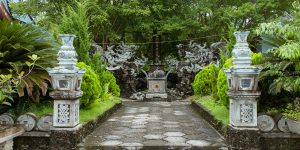
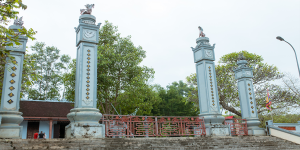
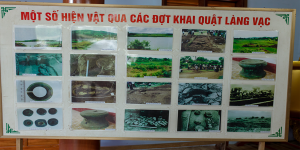
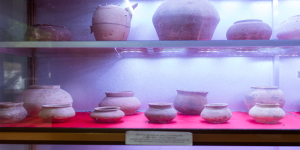
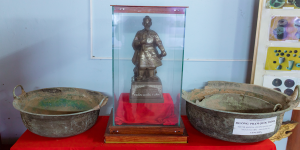
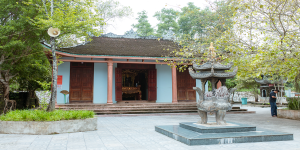
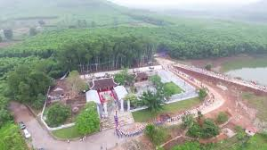
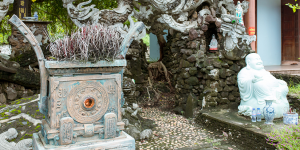
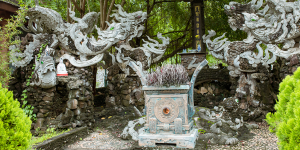
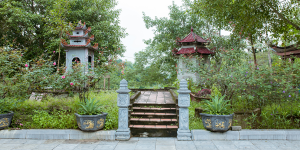
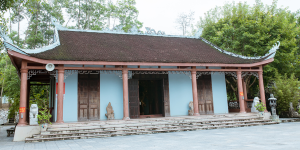
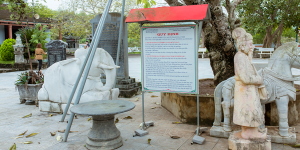
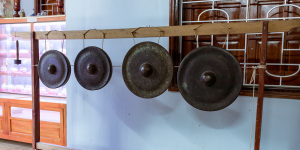
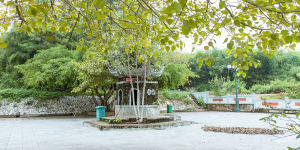
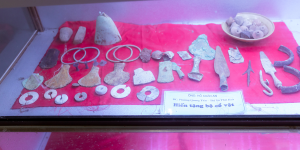
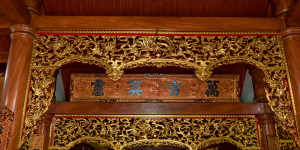

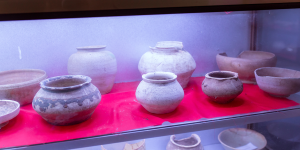
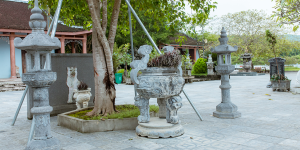
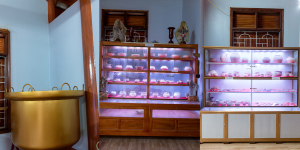
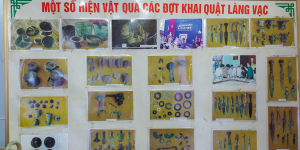
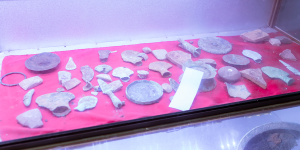
Camera tour
Price: Free
Time to visit a place: 120 phút
Open Time: 7:00 AM - Close Time: 6:00 PM
Address: Long Son Sub-district, Thai Hoa Town, Nghe An Province
LANG VAC – THAI HOA TOWN
Lang Vac in Nghia Hoa commune, now Thai Hoa town, Nghia Dan district is an archaeological relic belonging to Dong Son culture discovered in 1972. Up to now, 43 years, nearly half a century. From a remote village, Lang Vac has become famous for archeology at home and abroad. Lang Vac archaeological site has been honored as a national historical relic and the Lang Vac Festival is held once a year to attract people around the region and is a tourism highlight of the whole district and Nghe An province.
Since its discovery, Lang Vac has received special attention from domestic and foreign scientists because of the discovery of beautiful Dong Son bronze drums in the ground along with many other bronze items. It was the era of America's anti-destructive war. Not afraid of danger, two officers of the Institute of Archeology traveled all the way to Lang Vac by bicycle from Hanoi to study. Now, one of those two archaeologists has disappeared from the mountain. Less than a year later, in 1973, the Institute of Archeology organized the first excavation methodically and the results were very positive. It was found a quiet superficial burial area, including bronze drums as burial items, buried with the deceased. In addition, there are many daggers with human-shaped handles, shape of two snakes holding an elephant's leg, two snakes holding a tiger's leg, and quite a few wrist and ankle bracelets attached with many brass rattles. Up to now, in our country, there has never been an ancient tomb with more bronze drums and more beautiful bronze art items than that.
In 1981, Lang Vac’s tomb was excavated again. From the ground here, there are many more precious items that attract the attention of many foreign scientists, especially Japanese archaeologists.
In 1990 and 1991, a very large-scale excavation at the Lang Vac site was organized by Vietnamese and Japanese archaeologists. This was the first international cooperation program between the Institute of Archeology and Sophia University, Tokyo University in Japan. This collaborative excavation has offered new meaningful awareness of this archaeological site. Many graves along with a variety of beautiful bronze, glassware items, and agate jewelry items were discovered. Lang Vac was once again famous, this time it is known by many foreign archaeologists. A book published on Lang Vac is a scientifically appreciated Japan - Vietnam cooperation project called "The Lang Vac site" (Lang Vac site) was published in 2004, by English in Tokyo, Japan.
Lang Vac relic is precious and rare not only because it has provided the treasure of tangible heritage in our country with a series of unique bronze drums and art pieces, full of high aesthetics. But, Lang Vac is also a place to help scientists sketch a contemporary historical picture, which is extremely meaningful to the history of our country and the history of the Vietnamese nation.
Lang Vac is both an ancient village and an ancient tomb area. Archaeologists have discovered that this ancient village is a cultural layer filled with broken pottery. Lang Vac village is one of the relics of the famous Dong Son culture, more than 2,000 years ago. Scientists once analyzed a sample of coal ash here by the radiocarbon method, giving the result: 1990 ± 85 years to 1950, that is, around 40 BC. In other words, in the 1st century BC. In that year, the Han Dynasty invaded our country. In the plains, there were cultural massacres of the Lac Viet people with the policy of eradicating bronze drums, collecting drums to cast bronze horses and Ma Vien bronze column as recorded in ancient bibliographies. However, in the mountains of Nghia Dan, there is still an ancient Vietnamese ethnic group in Lang Vac that still retains the identity of Dong Son culture and Dong Son bronze drum. The Han Dynasty has not accessed to the Lang Vac area, so we know how radiant the Dong Son culture is even after 111 BC, the year the Han Dynasty ruled our country.
Along with the Lang Vac archaeological site belonging to the Dong Son culture, this place records the strong vitality of the ancient Vietnamese civilization in the formation and development of the Vietnamese nation.
Distance: 4.43 km
Distance: 4.68 km
Distance: 4.74 km
Distance: 4.84 km
Distance: 5.03 km
Distance: 5.04 km
Distance: 5.42 km
Distance: 5.52 km
Distance: 5.55 km
Distance: 5.59 km
Distance: 5.62 km
Distance: 5.82 km
Distance: 5.84 km
Distance: 5.93 km
Distance: 5.97 km
Distance: 4.66 km
Distance: 5.44 km
Distance: 5.55 km
Distance: 5.55 km
Distance: 5.70 km
Distance: 5.95 km
Distance: 7.34 km
Distance: 7.73 km
Distance: 8.48 km
Distance: 9.27 km
Distance: 9.86 km
Distance: 0 m
Distance: 20 m
Distance: 380 m
Distance: 4.56 km
Distance: 4.78 km
Distance: 4.85 km
Distance: 4.99 km
Distance: 5.02 km
Distance: 5.31 km
Distance: 5.51 km
Distance: 8.35 km
Distance: 9.71 km
Distance: 11.03 km
Distance: 13.12 km
Distance: 15.33 km
Distance: 16.46 km
Distance: 18.22 km
Distance: 18.36 km
Distance: 4.89 km
Distance: 5.50 km
Distance: 6.10 km
Distance: 6.69 km
Distance: 7.06 km
Distance: 8.36 km
Distance: 9.14 km
Distance: 12.23 km
Distance: 14.37 km


